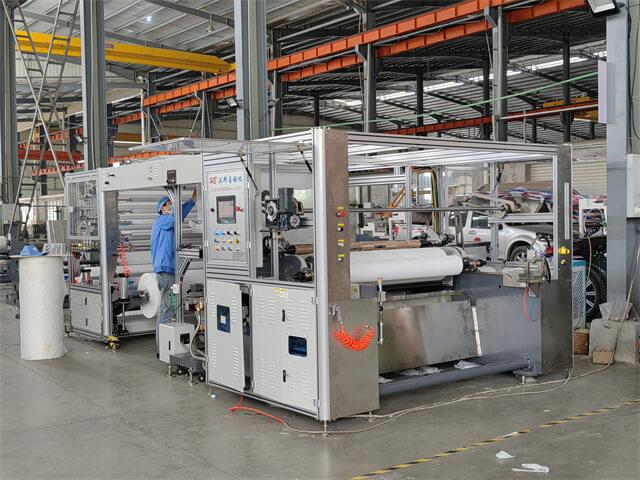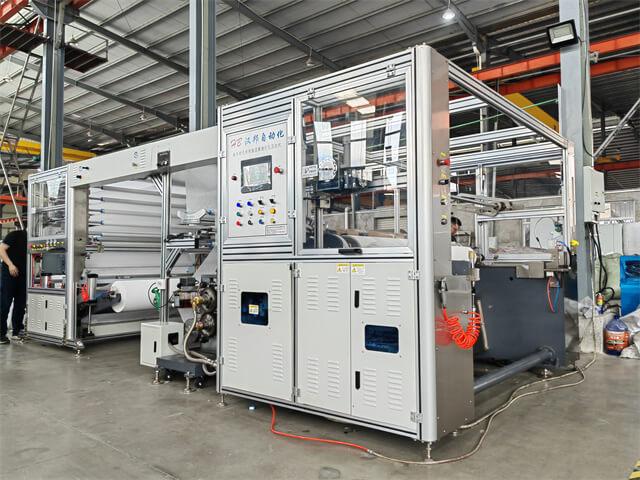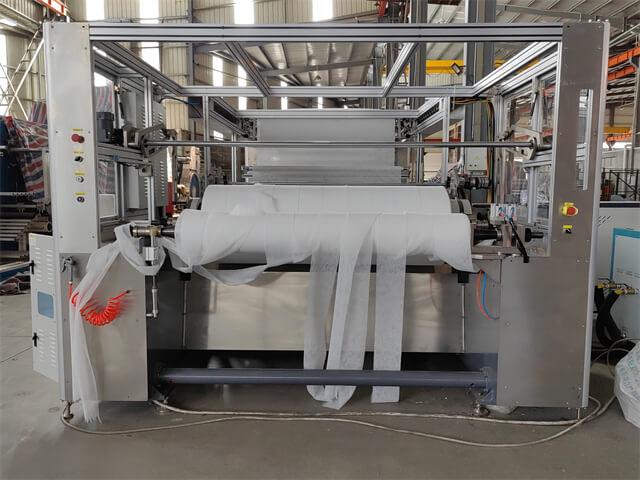Author:HB Nonwoven MachineryFROM:Compressed Towel Machine Manufacturer TIME:2023-12-20
Operating a Non Woven Fabric Embossing Machine
The non woven fabric embossing machine plays a crucial role in the production of various hygiene products such as diapers and sanitary napkins. This specialized equipment is designed to create intricate patterns and textures on non woven fabrics, enhancing their absorbency and comfort. By understanding the operation and capabilities of this machine, manufacturers can improve the quality and efficiency of their products, meeting the diverse needs of consumers worldwide.

Non woven fabrics are textiles produced by bonding fibers using mechanical, thermal, or chemical processes instead of weaving or knitting. These fabrics offer numerous advantages, including high breathability, liquid resistance, and softness. They are widely used in various applications, including the production of diapers, sanitary napkins, medical products, and wipes.
Embossing is a technique used to create raised patterns or textures on the surface of materials. In the context of non woven fabric production, embossing enhances the performance and aesthetics of the final product. The embossed patterns increase the surface area of the fabric, improving its absorbency and reducing the risk of leakage. Additionally, embossing can provide a pleasing visual appeal to

A typical non woven fabric embossing machine consists of several key components, including a feeding system, embossing rollers, heating elements, and a winding system. The feeding system ensures a continuous supply of non woven fabric, while the embossing rollers press the fabric against each other, creating the desired patterns. The heating elements enable the embossing

Before operating the non woven fabric embossing machine, proper setup is crucial. This includes aligning the embossing rollers, adjusting the temperature and pressure settings, and ensuring a consistent feeding speed. Accurate alignment and appropriate settings are essential to achieve uniform embossing results across the entire fabric. Regular maintenance and calibration are also necessary to keep the machine in optimal condition.
Operating the embossing machine requires strict adherence to safety protocols. Operators should wear appropriate protective clothing, such as gloves and goggles, to prevent injuries. It is important to regularly inspect the machine for any signs of damage or malfunction. Furthermore, operators should be trained in emergency procedures and have easy access to emergency stop buttons in case of unexpected situations.
To ensure the production of high-quality embossed non woven fabrics, manufacturers must implement robust quality control measures. This includes regularly inspecting the embossed fabrics for any defects or inconsistencies in the patterns. Samples should be taken from each batch for testing and evaluation, checking for parameters such as absorbency, durability, and texture. Adjustments can be made to the machine settings if any deviations are detected, ensuring consistent quality.
The non woven fabric embossing machine industry is continuously evolving, driven by technological advancements. Newer machines offer enhanced precision, faster production speeds, and the ability to create more intricate and customized patterns. Additionally, the integration of automation and digital controls has improved ease of operation and efficiency. Keeping abreast of these advancements allows manufacturers to stay competitive and meet the changing demands of the market.
The non woven fabric embossing machine is a critical component in the production of hygiene products such as diapers and sanitary napkins. By understanding its operation and capabilities, manufacturers can optimize the quality and efficiency of their products. With advancements in technology, the embossing machines continue to evolve, offering increased precision and customization options. By investing in this vital equipment and implementing proper setup and safety measures, manufacturers can meet the diverse needs of consumers and maintain a competitive edge in the market.
